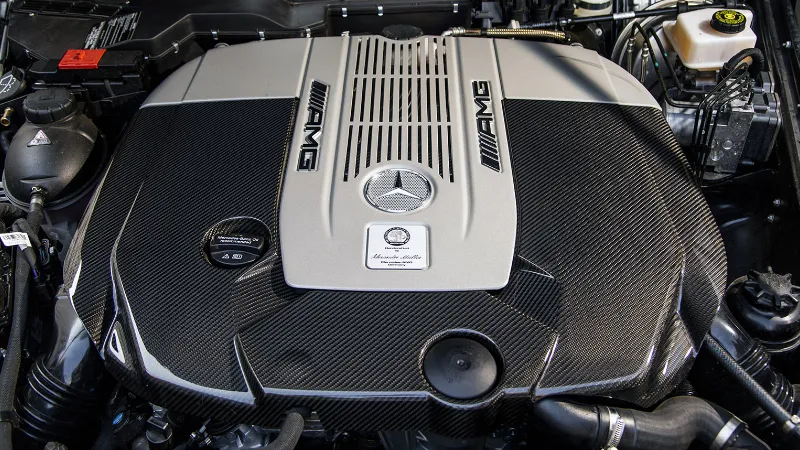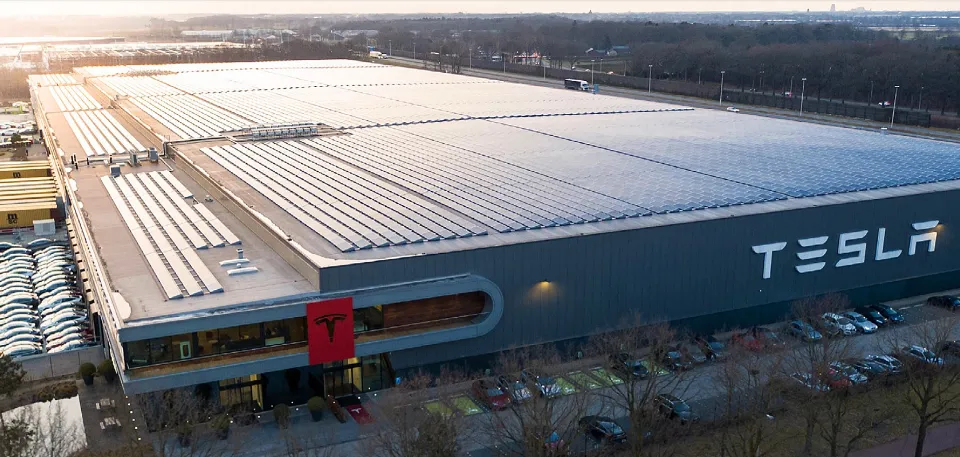The majority of people view a car as a vehicle they fuel up and use to get from point A to point B. But have you ever stopped and thought, How does it actually do that? But how car engines work, exactly?
Spark plugs, fuel injectors, cylinders, and pistons make up an internal combustion engine. These parts work together to burn fuel and release exhaust gas from the cylinders. It builds up energy that powers the car by repeating the process.
Please read on for more detailed information.
How Car Engines Work?
Most cars use a four-stroke engine, designed by Nicholas Otto in 1861. The engine has a series of holes, called cylinders, inside which is a piston. As the piston descends, it draws in air and gasoline, a mixture of hydrocarbons and additives, to protect the engine. The piston then moves up, compressing the mixture to form an ideal mixture of temperature (up to 2500°C) and pressure. Once the piston reaches its top position, it creates a spark.
Now that the necessary components for combustion—oxygen, fuel, and heat—are present, an explosion results, which forces the piston to descend once more. The piston resets for the cycle to begin again as it rises, expelling the exhaust created during combustion. The car is propelled by the explosions produced by each cylinder by coupling the bottom of the piston to a crankshaft. The entire process happens quickly: a Formula One car’s crank rotates at about 15,000 revolutions per minute, which equates to about 50,000 engine explosions per lap.
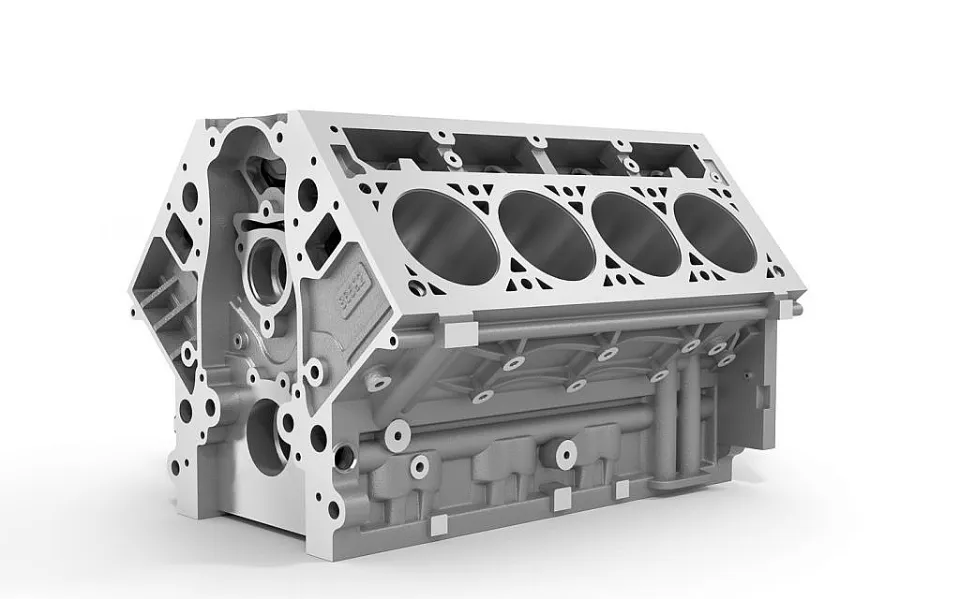
Where Engine Power Comes From
Each minute, thousands of small controlled explosions caused by igniting a mixture of fuel and oxygen drive those pistons up and down. The term “combustion” or “power” stroke refers to each time the fuel ignites. The piston in the cylinder is forced downward by the heat and expanding gases from this miniexplosion.
Today’s internal combustion engines are almost exclusively of the four-stroke variety (for the sake of simplicity, we’ll only discuss gasoline engines here). Three additional strokes—intake, compression, and exhaust—follow the combustion stroke, which forces the piston to descend from the top of the cylinder.
For engines to burn fuel, they need air, specifically oxygen. The intake stroke is when the piston moves downward, acting like a syringe to draw outside air into the engine’s intake system. The intake valves close as soon as the piston reaches the bottom of its stroke, effectively sealing the cylinder for the compression stroke, which is carried out in the inverse direction of the intake stroke. The intake charge is compressed by the piston’s upward movement.
The Four Strokes of a Four-Stroke Engine
Near the top of the compression stroke, gasoline is directly injected into the cylinders in today’s most advanced engines. (During the intake stroke of other engines, the fuel and air are premixed.) Spark plugs ignite the mixture of air and fuel in either scenario just before the piston reaches top dead center, also known as TDC. (How Many Spark Plugs Does a Diesel Have? )
During the combustion stroke, the piston is forced downward by the resultant expansion of hot, burning gases. Similar to pressing down on a bike’s pedals, this is the motion that starts the wheels of your car turning. Exhaust valves open when the piston reaches bottom dead center of the combustion stroke, allowing the combustion gases to be pumped out of the engine (much like air is pumped out of a syringe as it rises again). The exhaust valves close at top dead center when the exhaust is released—it continues through the car’s exhaust system before exiting the back of the vehicle—and the cycle repeats.
In order to keep the engine balanced and as smooth as possible, the individual cylinder cycles in multicylinder car engines are evenly spaced apart and offset from one another.
Nevertheless, not every engine is made the same. They are available in various sizes and shapes. Most automobile engines arrange their cylinders in a straight line, such as an inline-four, or combine two banks of inline cylinders in a vee, as in a V-6 or a V-8. The combined volume of an engine’s cylinders is used to determine an engine’s size, or displacement.
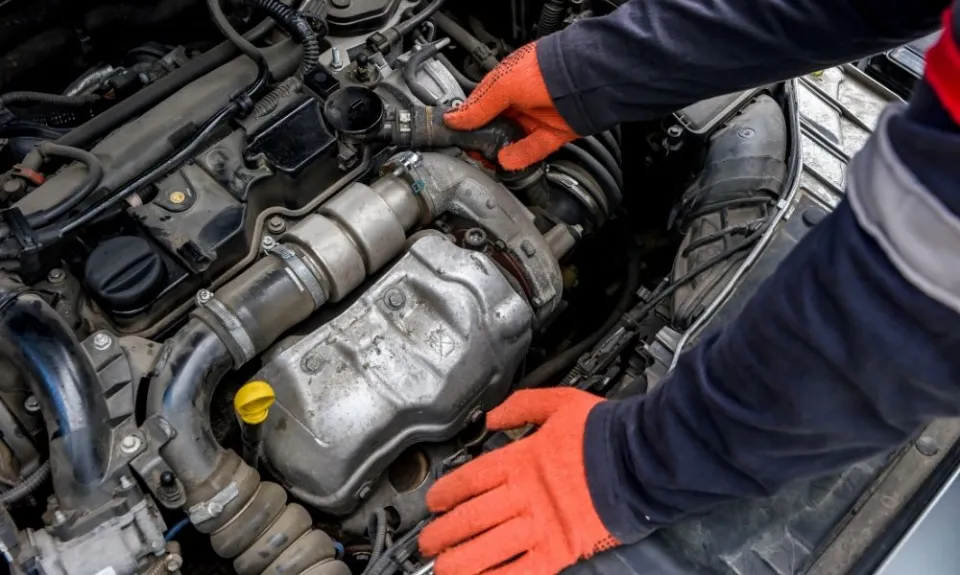
Basic Engine Parts
The piston travels up and down inside the cylinder, which is the heart of the engine. The majority of lawn mowers have single-cylinder engines, but four, six, and eight cylinders are more common in cars. In a multi-cylinder engine, the cylinders usually are arranged in one of three ways: inline, V or flat (also known as horizontally opposed or boxer), as shown in the figures to the left.
A four-cylinder engine with an inline configuration is the inline four that we mentioned earlier. In terms of smoothness, manufacturing costs, and shape characteristics, different configurations have different benefits and drawbacks. They are better suited for particular vehicles as a result of their benefits and drawbacks.
Here is a closer look at a few essential engine components.
- Spark plug
The spark plug supplies the spark that ignites the air/fuel mixture so that combustion can occur. For things to function properly, the spark must occur at precisely the right time.
- Valves
To let in air and fuel and release exhaust, the intake and exhaust valves open at the appropriate times. As the combustion chamber is sealed during compression and combustion, observe that both valves are closed.
- Piston
A metal cylinder that moves up and down inside the cylinder is called a piston.
- Piston Rings
Between the piston’s outside and the cylinder’s inside edge, piston rings offer a sliding seal. The rings serve two purposes:
- They stop the combustion chamber’s exhaust and fuel/air mixture from leaking into the sump during compression and combustion.
- They prevent the sump’s oil from leaking into the combustion zone, where it would be lost through burning.
Most cars that “burn oil” and have to have a quart added every 1,000 miles are burning it because the engine is old and the rings no longer seal things properly. Piston rings in many contemporary vehicles are made of more sophisticated materials. That’s one of the reasons why engines last longer and can go longer between oil changes.
- Connecting rod
The piston is connected to the crankshaft by the connecting rod. It can rotate at both ends, allowing its angle to change as the piston moves and the crankshaft turns.
- Crankshaft
As a jack-in-the-box crank would, the crankshaft converts the piston’s up-and-down motion into circular motion.
- Sump
The crankshaft is encircled by the sump. It contains some amount of oil, which collects in the bottom of the sump (the oil pan).
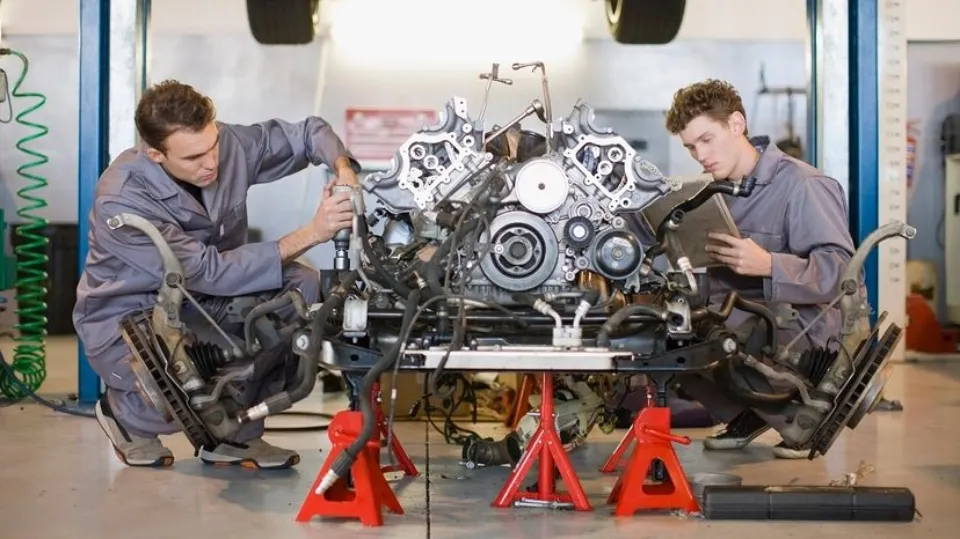
The Different Types of Engines
Gasoline Engine
An example of an internal combustion engine is the gasoline engine. The intake, compression, combustion, and exhaust are the four fundamental strokes of a gasoline engine. Because gasoline and air mix easily, even a small spark can start a fire. As a result, the gasoline engine has a spark plug to ignite the mixture of fuel and air. The four strokes of the gasoline engine work as follows.
- Intake
The intake valve opens, allowing the air and fuel mixture to be drawn into the cylinder.
- Compression
Intake valve closure causes a piston to compress the mixture of fuel and air.
- Combustion
At this point, the air and fuel mixture erupts, and the force of the explosion drives the piston downward.
- Exhaust
A valve allows the burned gases in the cylinder to be expelled.
Diesel Engine
The way a diesel engine ignites the mixture of air and fuel is slightly different from how a gasoline engine does, but otherwise the two engines operate similarly. The air and fuel are already mixed before being sucked into the cylinder in gasoline engines. Diesel engines, on the other hand, use fuel injectors to dispense fuel into the cylinder. Since diesel engines lack a spark plug, they require higher compression ratios to make sure that the air and fuel mixture is sufficiently compressed to cause an ignition.
Electric and Hybrid vehicle
Since electric vehicles are powered by electricity rather than internal combustion engines, they have an electric motor instead. The electric motor is powered by an internal battery pack that stores electrical energy. By plugging into a charging station, the battery pack is charged.
Vehicles with a hybrid powertrain, however, combine an internal combustion engine and an electric motor. Therefore, the two distinct systems cooperate to power the vehicles. In hybrid vehicles, the batteries are charged by the internal combustion engine, so there is no need to plug them in.
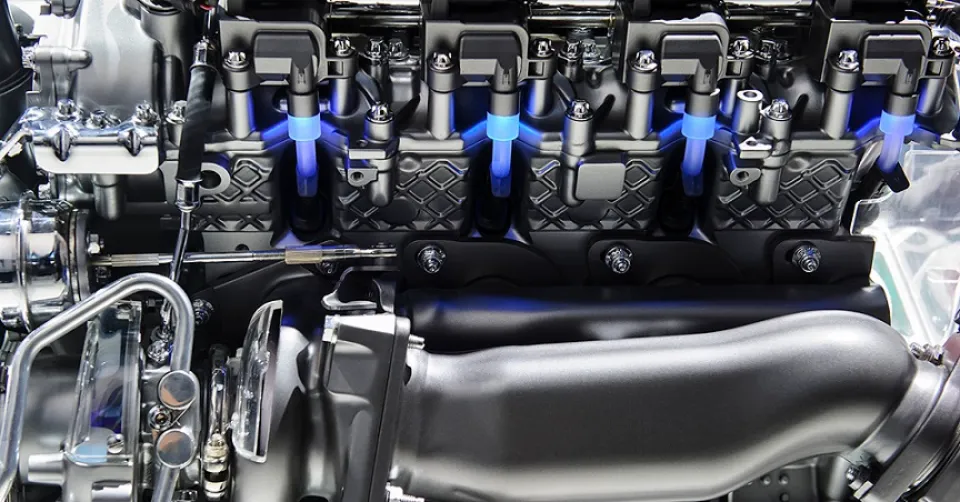
Different Engine Layouts
- In-line engine
Four vertical cylinders are arranged in a row, closely spaced apart, making this engine type the simplest and most popular. This is known as an in-line engine . Many vehicles with displacements greater than 2,000cc have six cylinders in line.
- V-8 engine
The more compact V-engine is fitted in some cars, especially vehicles with eight or 12 cylinders, and also some with six cylinders. In this arrangement, the cylinders are placed next to one another at an angle of up to 90 degrees.
- Horizontally-opposed engine
Some engines have horizontally opposed cylinders . With the angle widened to 180 degrees, they are a continuation of the V-engine. Saving height and improving some aspects of balance are benefits.
Castings for mounting ancillary equipment, such as an oil filter and a fuel pump, as well as the cylinders in which the pistons operate are also included in the block. The crankcase has a sump, which is an oil reservoir, attached to it with bolts.
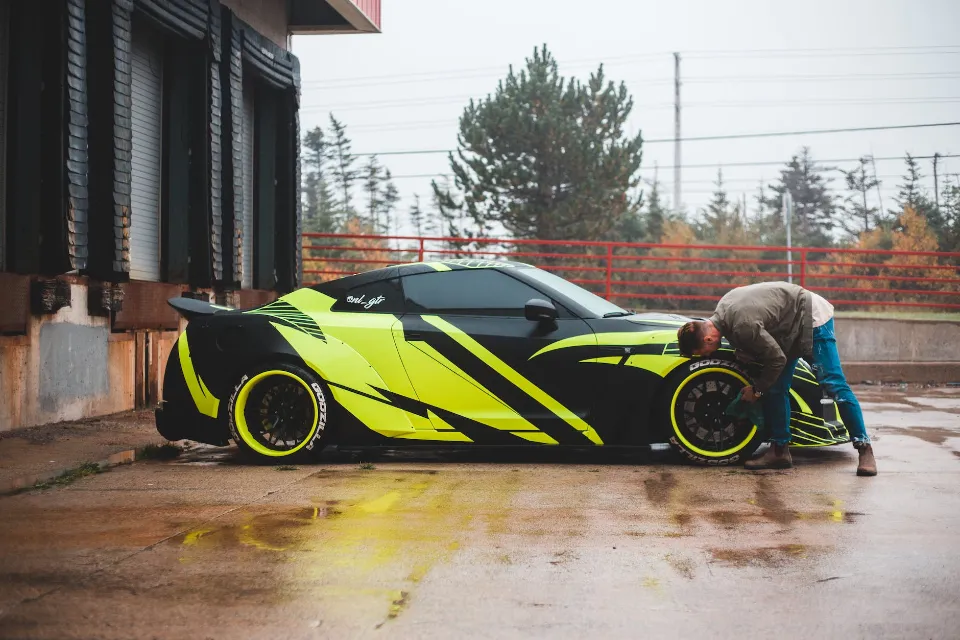
FAQs
What Makes a Car Engine Run?
A gasoline car typically uses a spark-ignited internal combustion engine, rather than the compression-ignited systems used in diesel vehicles. Fuel is injected into the combustion chamber in a spark-ignited system, where it is combined with air. Using a spark from the spark plug, the fuel and air mixture is ignited.
How a Car Works Engine Block?
All of the significant parts that make up a motor’s bottom end are contained in the engine block, also called a cylinder block. This is where the crankshaft spins, and the pistons move up and down in the cylinder bores, fired by the fuel combusting. It also supports the camshaft on some engine designs.
What is the Difference Between a Gasoline Engine and a Diesel Engine?
There isn’t a spark plug in a diesel engine. Instead, diesel fuel is injected into the cylinder, where it is ignited by the heat and pressure of the compression stroke. Diesel fuel has a higher energy density than gasoline, resulting in better fuel economy for diesel engines.
Are There Any Advantages to Steam Engines and Other External Combustion Engines?
Any fuel that burns can be used as the fuel for a steam engine, which is its main benefit. For instance, whereas an internal combustion engine requires pure, high-quality liquid or gaseous fuel, a steam engine can run on coal, newspaper, or wood as fuel.
Summary: How Car Engines Work?
Fuel injectors, spark plugs, cylinders, and pistons make up an internal combustion engine. These components work together to burn the fuel and release exhaust gases from the cylinder. It generates the energy needed to power the car by repeating this process.
If you have any questions, please leave a comment. KV Auto tries to give you the best car industry information. Thank you for reading.
Read about:

